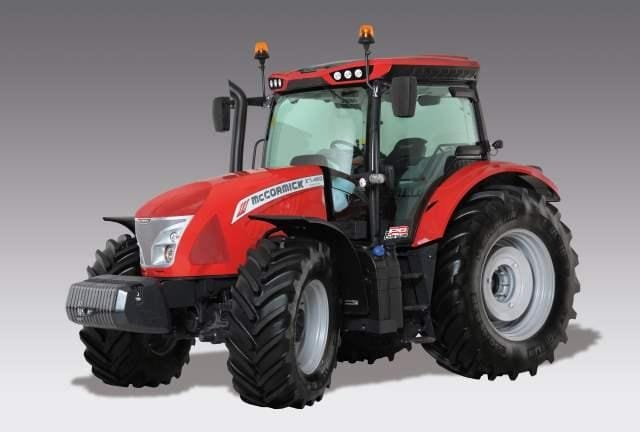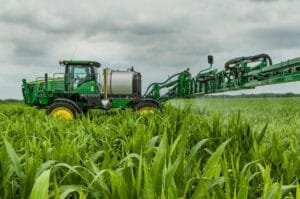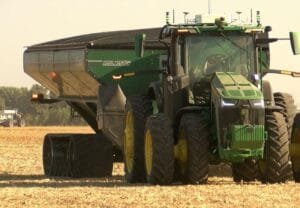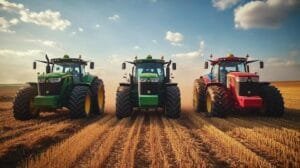The agricultural landscape witnessed a transformative shift when John Deere revealed its newest autonomous machines at CES 2025. Farmers gathered in Las Vegas this January to behold the swift evolution of farming technology. These fully autonomous tractors, showcased at John Deere’s booth #5016 in the West Hall, represent not merely incremental improvements but a fundamental reimagining of agricultural operations.
The Gen-2 autonomous system expands beyond traditional broad-acre farming, pushing into specialized domains previously thought unsuitable for automation. Complex orchard environments, with their irregular terrains and tight spaces, now fall within the operational capabilities of these mechanical farmhands. One California farmer, Russell Maichel, who cultivates tree nuts since the 1980s, described the technology as “like having a tireless worker that knows every inch of my land”.
These machines navigate orchards with 95% accuracy, an achievement with substantial economic implications for producers struggling against labor shortages. Cost reductions approach 30% in some implementations, though regional variations exist depending on crop type and terrain complexity. The financial equation appears increasingly favorable toward automation adoption.
John Deere’s autonomous tractors perform all standard operations previously requiring human operators. They handle spraying operations with precise application rates, minimizing chemical waste and environmental impact. These tractors also execute cultivation tasks with consistent depth control that human operators find challenging to maintain over extended periods.
The integration possibilities expanded considerably this year. Retrofit kits allow farmers to transform existing equipment into autonomous units, making the transition more economically feasible for operations hesitant about wholesale fleet replacement. This measured approach acknowledges the substantial capital investments already made by agricultural businesses across the country.
Climate-Smart Innovations Beyond Autonomous Operation
While autonomous navigation captures immediate attention, climate-smart farming solutions revealed at CES deserve equal consideration. Precision agriculture AI developments enable disease detection capabilities that identify potential crop problems before visible symptoms manifest. These systems utilize complex algorithms trained on massive datasets of plant pathology images, creating a diagnostic tool of unprecedented accuracy.
The Agri Concept 2.0 electric tractor stands as a forward-thinking complement to automation, featuring dual operational modes. Farmers can manually drive using the electric powertrain when necessary, but the tractor primarily functions through data- and AI-driven autonomous systems. This represents a transitional technology for farmers unready to relinquish complete control to autonomous systems.
Water management advancements featured prominently among the exhibition booths. New sensor arrays monitor soil moisture with granular precision, enabling irrigation systems to deliver water exactly where needed. In response for growing concern about water resources, these systems reduce usage while improving crop yields through optimized hydration scheduling.
The integration challenges remain substantial. Farm data infrastructure often lacks the necessary robustness for seamless implementation. Connectivity issues plague rural areas where these technologies would provide greatest benefit. Yet vendors presented promising solutions utilizing mesh networks and local processing capabilities that function despite intermittent cloud connectivity.
Cybersecurity considerations have emerged alongside autonomy. As farming operations become increasingly connected, protection against potential system compromises becomes a crucial aspect of implementation. Several exhibitors demonstrated enhanced security protocols designed specifically for agricultural applications, though standardization efforts remain in preliminary stages.
The environmental benefits extend beyond reduced chemical applications. Fuel consumption decreases considerably with optimized autonomous navigation, contributing to farming’s carbon footprint reduction. Electric options further enhance sustainability metrics, though battery life limitations continue presenting challenges for operations requiring extended daily use.
These technological developments arrive at a pivotal moment as agriculture confronts climate change impacts, labor shortages, and increasing regulatory pressures. The innovations unveiled at CES 2025 suggest a future where farming becomes simpler yet more complex simultaneously – reducing physical labor while demanding greater technological sophistication from those who manage these systems.
For producers willing to embrace the learning curve, the rewards appear substantial. Increased efficiency, reduced environmental impact, and improved crop consistency represent compelling advantages that will likely accelerate adoption across diverse agricultural sectors in coming years.







